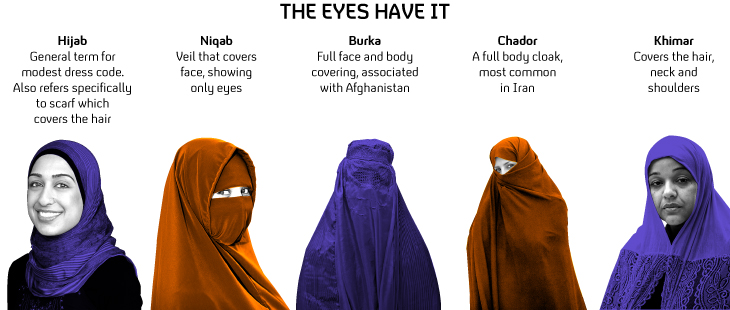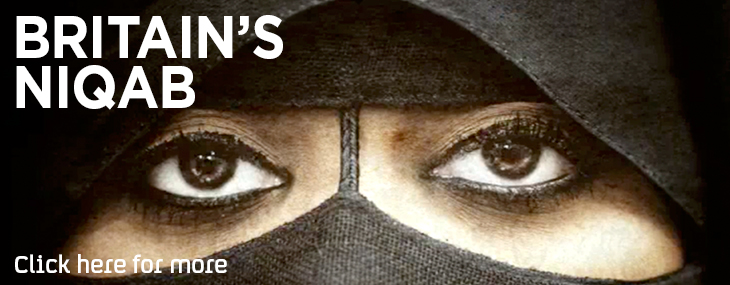From hijab to burqa – a guide to Muslim headwear
 Darshna Soni
Communities Editor
Darshna Soni
Communities Editor
For some, wearing Muslim headdress is an assertion of religious and cultural identity. For others, it is a symbol of female oppression. Darshna Soni explains the differences between headwear styles.

Within Islam, dress codes are known as hijab, a term which refers to the principle of modesty and which includes behaviour as well as dress, writes Channel 4 News Home Affairs Correspondent Darshna Soni.
Although recent controversies have focused on what Muslim women wear, there are also rules for men.
These rules are open to a wide range of interpretations. Some Muslim women believe in covering every part of the body, others do not observe any special dress rules. Here is our quick guide.
Hijab
This is the most common type of headscarf worn by Muslim women here in the UK. It is a headscarf that covers the head and neck, but leaves the face clear. The scarves come in many different shades and shapes and are often colour co-ordinated with women’s outfits.
Niqab
The niqab is a combination of a head covering and scarf that covers all of a woman’s face except for her eyes. It usually flows down to the mid-back to cover a woman’s hair, and may flow down to the mid-chest in the front. It is most often worn in Arab countries, but an increasing number of Muslim women in the west are choosing to wear it.
Although the majority of scholars agree that hijab is obligatory, only a minority of them say that the niqab is.
Burqa
The terms niqab and burqa are often incorrectly used interchangeably; a niqab covers the face while a burqa covers the whole body from the top of the head to the ground. It is the most concealing of all Islamic veils. It covers the entire face, including the eyes (with a mesh cloth to see through) and the body.
Chador
The chador is a body-length outer garment, usually black in colour, worn mainly by women in Iran. It is not secured at the front by buttons or clasps, so the woman holds it closed
Jilbab/Abaya
These are long, loosely fitted garments worn by Muslim women to cover the shape of their bodies. They are often worn in combination with the hijab or niqab.
The niqab in Islam
Within Islam, there is disagreement about whether the niqab is compulsory, writes Darshna Soni. Ironically, face veiling was practised by many cultures before Islam, and scholars say Muslims adopted the practice to fit in with these societies.
Today, the niqab is seen as a symbol of the very opposite, of separation and difference.
There are just two - arguably ambiguous - references in the Koran dealing specifically with women's dress, and this has led to different interpretations.
It was known that the wives of the Prophet Muhammad covered themselves. However, the Koran explicitly states that the wives of the Prophet are held to a difference standard.
Quote from the Koran
O Prophet! Tell thy wives and daughters, and the believing women, that they should cast their outer garments over their persons (when abroad): that is most convenient, that they should be known (as such) and not molested. And Allah is oft-forgiving, most merciful.
-
Latest news
-
Are Labour and Tories in election mode? | The Political Fourcast35m

-
Boy with profound learning disabilities reaches out of court settlement after abuse in residential school7m

-
India election: Modi rivals hit by string of raids and arrests7m

-
Can UK’s abandoned mines be used to build a greener future?5m

-
Sycamore Gap: Man pleads not guilty to felling iconic tree2m

-





